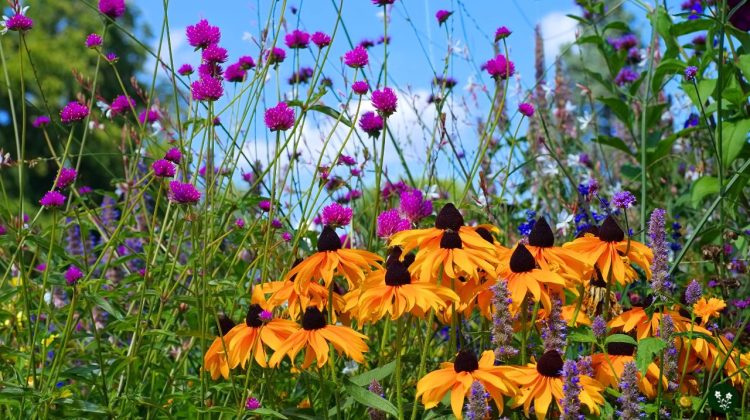
As a gardening enthusiast, you’ve likely come across the charming black-eyed Susan. These cheerful, yellow-orange flowers bring a pop of color and visual interest to any garden.
But did you know that choosing the right companion plants for your black-eyed Susans can enhance their beauty and create a more harmonious and healthy garden ecosystem?
When choosing companion plants for your black-eyed Susans, many options exist. These flowers thrive in full sun and well-draining soil, so select companions with similar requirements.
Furthermore, combining plants with contrasting foliage or complementary bloom colors can create a stunning visual impact in your outdoor space.
In this article, you’ll discover a variety of companion plants that pair beautifully with black-eyed Susans, contributing to a vibrant and diverse garden.
From grasses to asters, these companions will enhance your garden’s overall allure and health while adding a touch of charm that only Mother Nature can provide.
In this article, we'll cover
1. Companion Planting Benefits
Companion planting can offer a variety of benefits for your black-eyed Susan garden.
When you choose the right companion plants, you help create a harmonious environment for the plants and the beneficial insects visiting your garden.
One of the main benefits of companion planting is that it attracts pollinators.
Many companion plants for black-eyed Susan, such as Salvia and Russian Sage, produce vibrant flowers that draw bees, butterflies, and other pollinators to your garden.
As these insects move from plant to plant, they aid in pollination, leading to increased fruit and seed production.
Another advantage of companion planting is attracting beneficial insects, such as ladybugs and lacewings. These insects help keep pest populations in check, reducing the need for chemical insecticides.
For example, sage and other members of the Lamiaceae family, like mint and thyme, are known to repel pests naturally.
Companion planting can also enhance the overall appearance of your garden. When you combine different plants, you create a diverse tapestry of colors, heights, and textures.
For instance, the deep red blooms of the Lobelia and the blue-violet flowers of Victoria Blue can provide a visually striking contrast against the yellow petals of your black-eyed Susan plants.
Lastly, companion planting can contribute to soil enrichment. Some plants, like legumes and certain flowers, can improve soil quality by fixing nitrogen or adding organic matter.
This can enhance other plants’ growth, including your black-eyed Susan.
Remember that the key to successful companion planting is selecting plants with compatible growth habits and environmental needs.
With careful planning and experimentation, you can create a beautiful, sustainable, and beneficial black-eyed Susan garden.
2. Flower Companion Plants for Black-Eyed Susans
Coneflowers
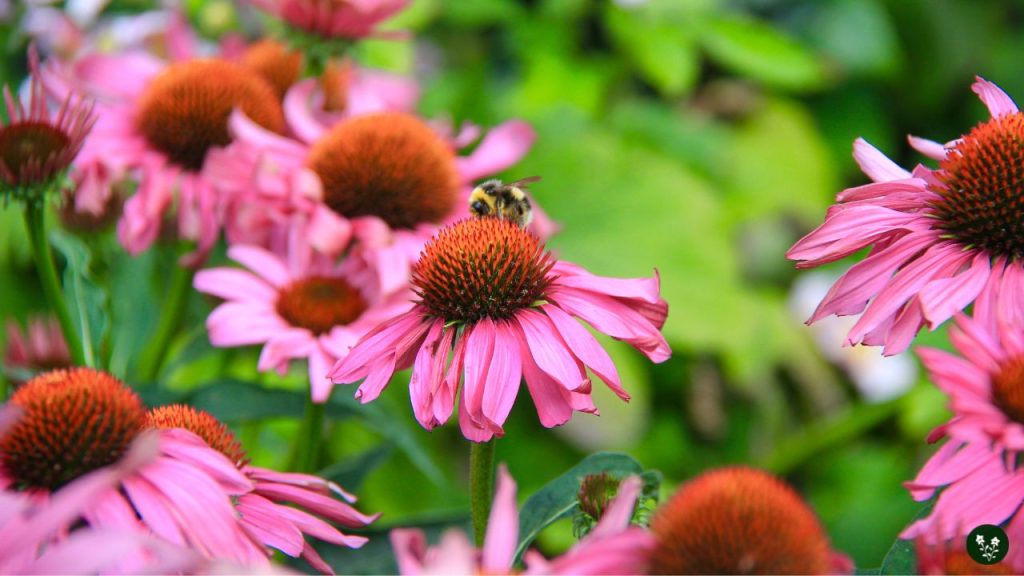
Coneflowers (Echinacea) are a great companion for your Black Eyed Susans due to their colorful blooms and ability to attract pollinators.
These flowers enjoy the same growing conditions as Black Eyed Susans, making them easy to maintain alongside each other.
Shasta Daisy
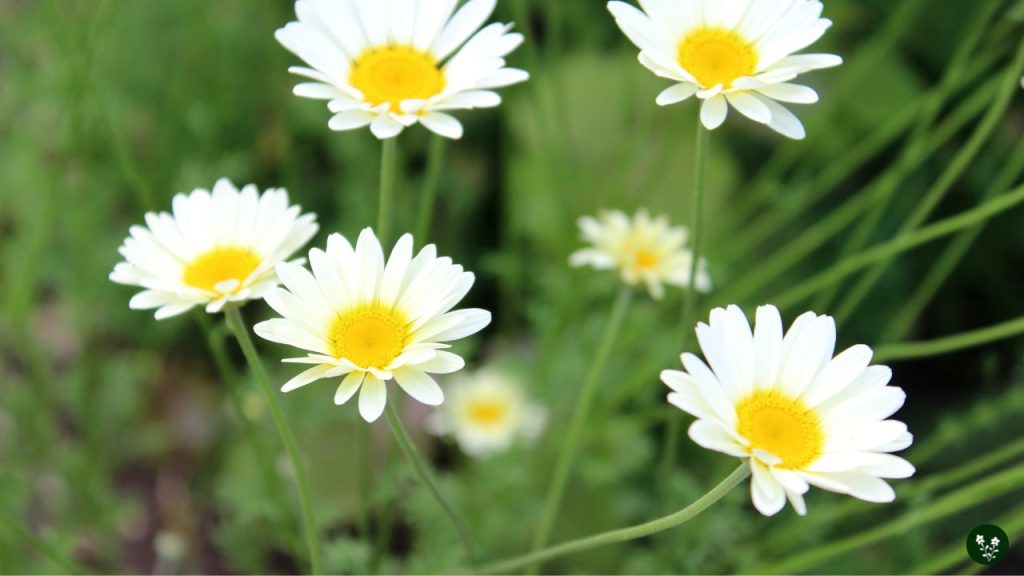
Shasta daisies share similar growing conditions with Black Eyed Susans, preferring full sun and well-draining soil.
Their bright white petals contrast beautifully with the yellow and black hues of Black Eyed Susans.
Learn more about: The Symbolic Daisy Flower: Exploring the Meaning of Love
Bee Balm
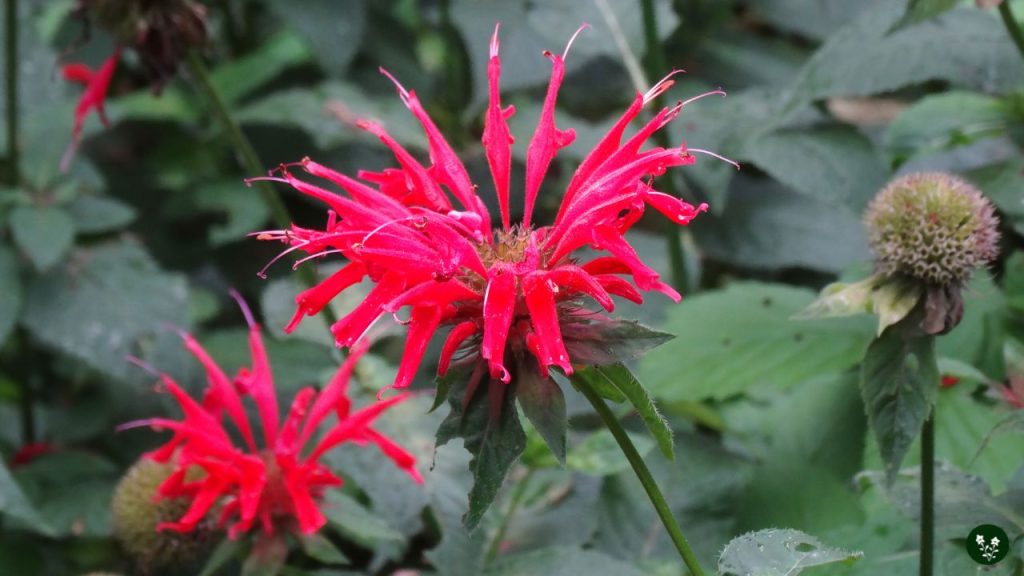
Bee balm is a fantastic partner for Black-Eyed Susans as it not only adds colors like red, pink, and purple to your garden but also attracts pollinators.
You’ll find that both plants do well under similar growing conditions.
Coreopsis
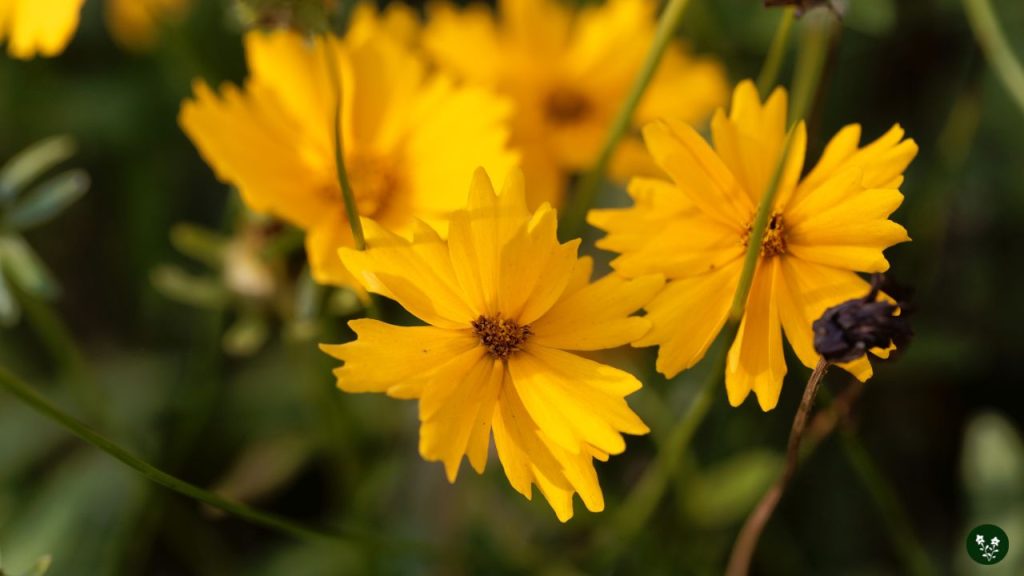
Coreopsis offers a variety of bright colors to create a visually stunning combination with your Black-Eyed Susans.
They have similar growth habits, prefer the same growing conditions, and make a great duo in your garden.
Liatris
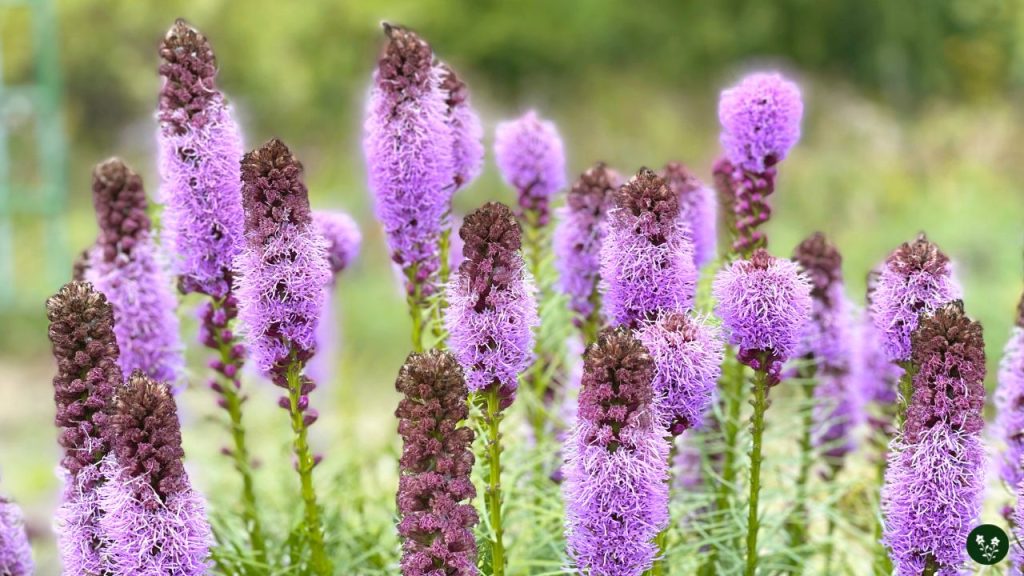
With its tall spikes of fluffy purple flowers, Liatris creates an appealing contrast when planted alongside Black-Eyed Susans.
These plants both enjoy full sun and well-draining soil to thrive.
Penstemon
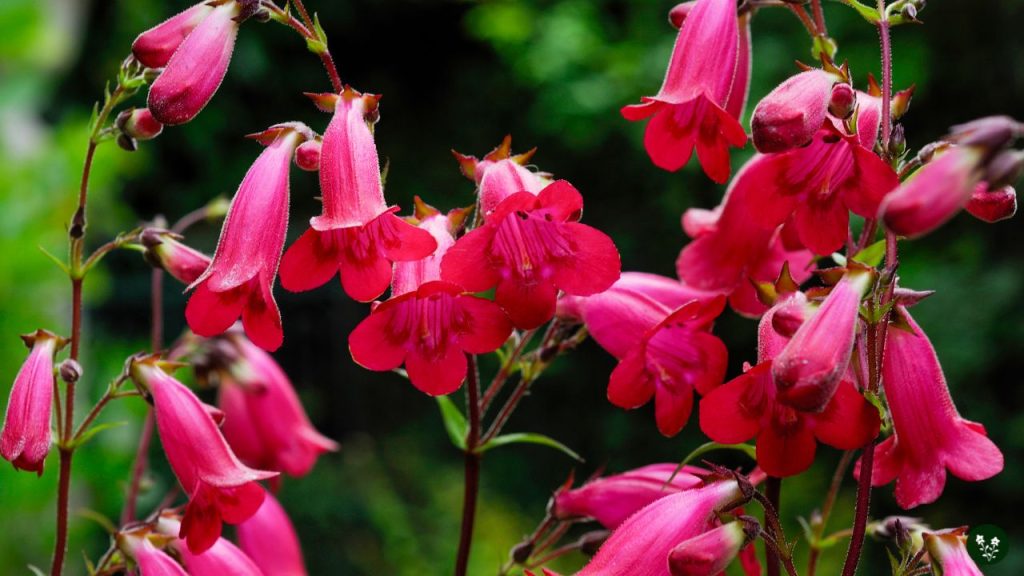
Another good companion for Black-Eyed Susans is Penstemon.
They provide striking colors like red, purple, and white and share similar growing conditions—benefit from having both pollinator-friendly plants in your garden.
Marigold
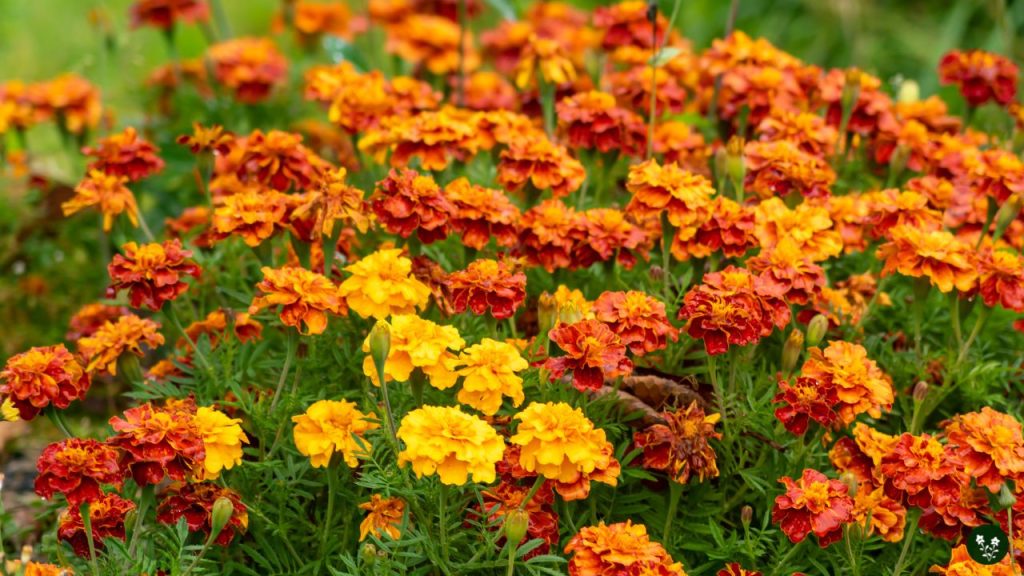
Marigolds are suitable companions for Black-Eyed Susans due to their vibrant colors and pest-repelling properties.
Plant them nearby to help keep unwanted pests away.
Zinnia
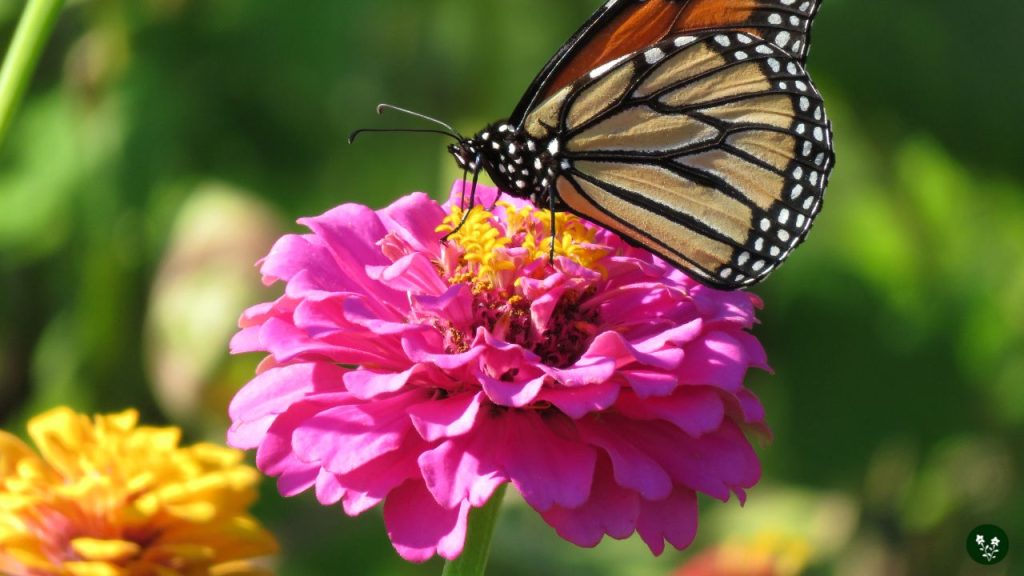
Pair your Black Eyed Susans with Zinnias to create a colorful and lively garden. Zinnias come in bold colors and thrive under similar conditions as Black-Eyed Susans.
Cosmos
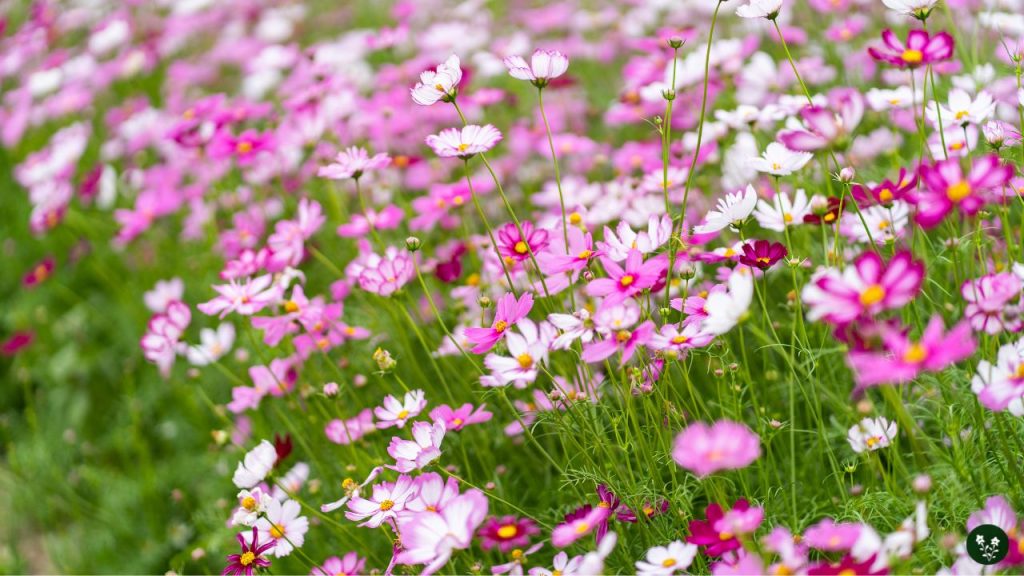
Cosmos flowers offer a delicate, feathery texture that complements the bold appearance of Black Eyed Susans.
Both prefer full sun and enjoy similar growing conditions, making them a great match.
Sunflower
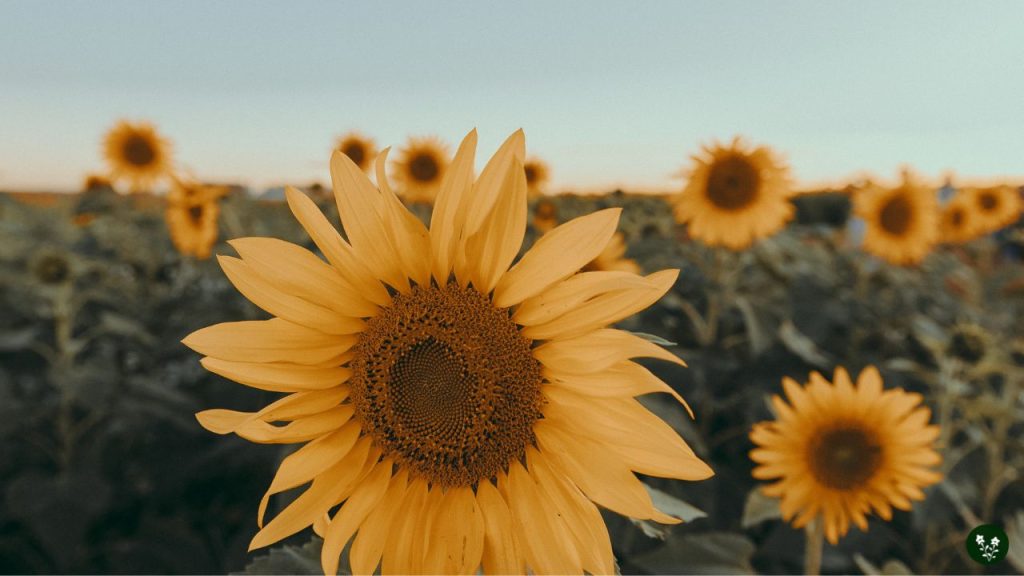
Sunflowers and Black Eyed Susans create a visually appealing combination of bright yellows and contrasting textures.
Both plants appreciate full sun and well-draining soil to flourish together.
Learn more about:
- The Spiritual Sunflower Meaning for Love and Life
- Types of Sunflowers Making You Smile and Fascinated
- How to Grow Sunflowers That Will Brighten Your Day
- Sunflower Companion Plants: A Quick Guide to Garden Harmony
Russian Sage
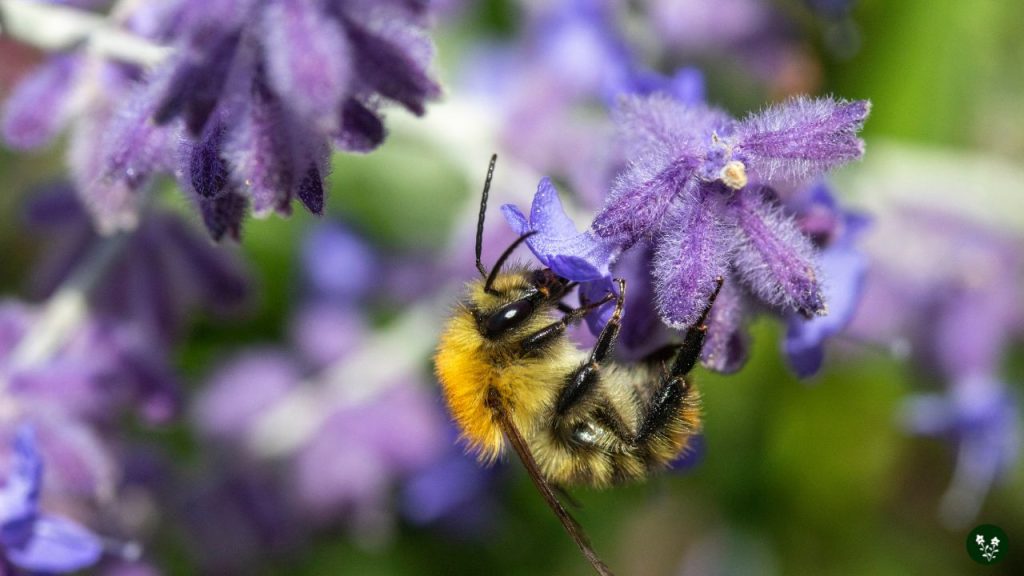
With its beautiful blue-purple flowers, Russian sage creates a stunning contrast next to Black Eyed Susans.
They both share similar growth preferences, ensuring they coexist harmoniously.
Nasturtium
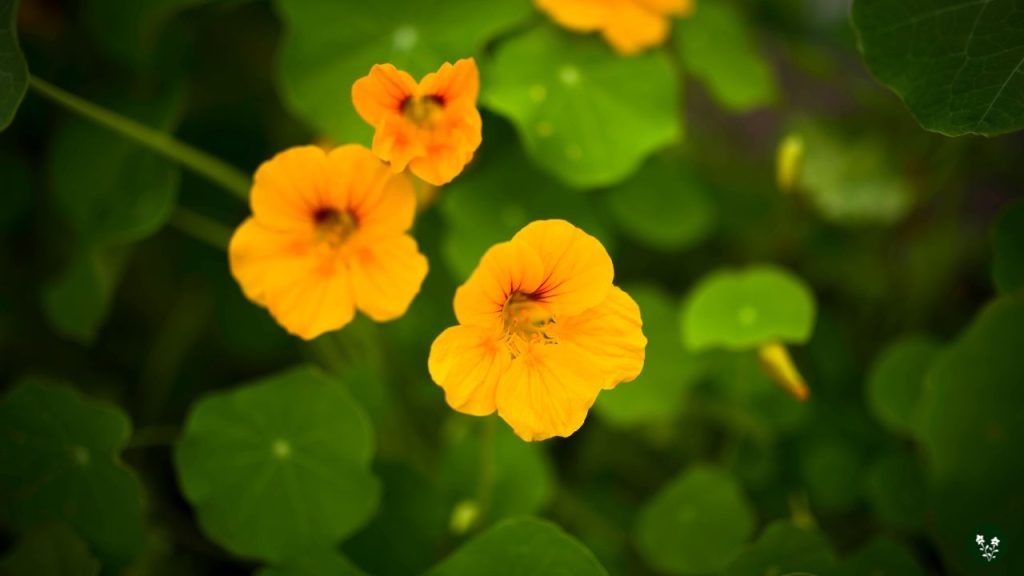
Nasturtiums bring bold, colorful blooms to your garden while providing natural pest control. Plant them close to your Black Eyed Susans for a vibrant, functional pairing.
Blanket Flowers
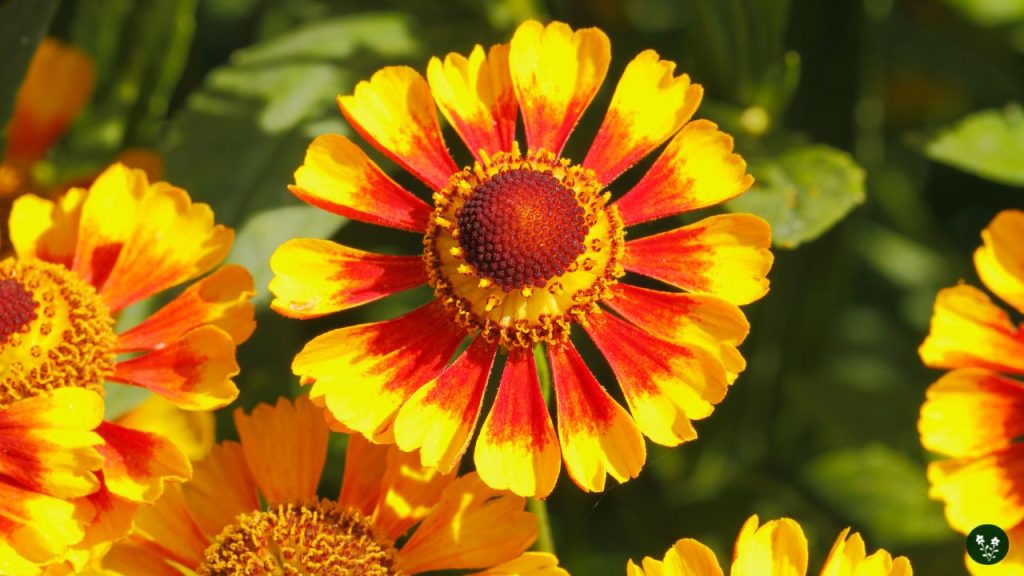
Blanket flowers (Gaillardia) offer a variety of warm, vibrant colors that complement the cheerful hues of Black Eyed Susans.
They enjoy the same full sun and well-draining soil conditions, making them an excellent companion in your garden.
3. Herbs Companion Plants for Black-Eyed Susans
Rosemary
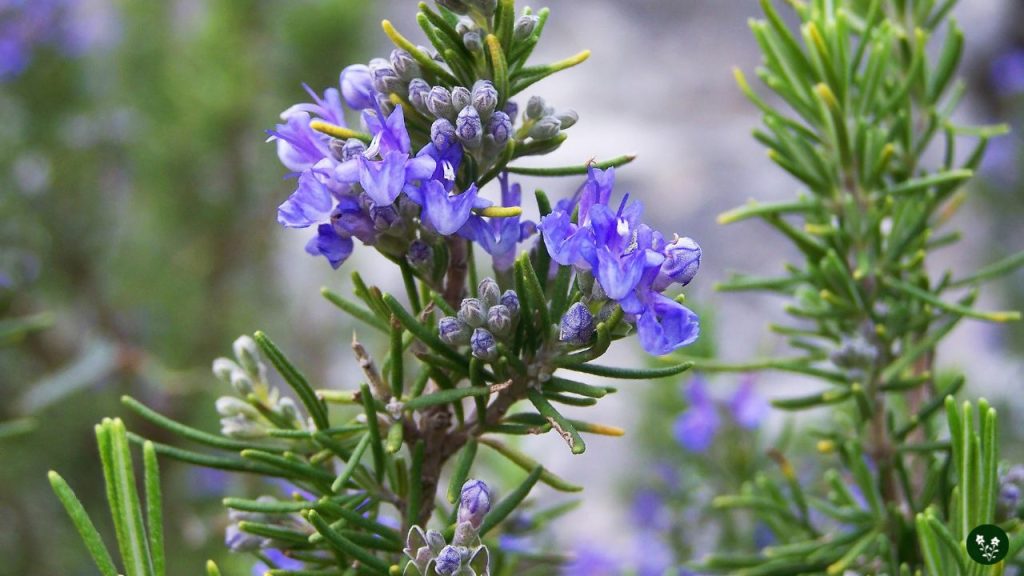
Rosemary (Rosmarinus officinalis) is an excellent companion plant for your Black-eyed Susans.
They both thrive in full sun, and rosemary’s evergreen foliage contrasts the bright colors of the Black-eyed Susans.
Planting rosemary near your Black-eyed Susans can also help deter pests, such as aphids and spider mites, thanks to its strong fragrance.
Thyme
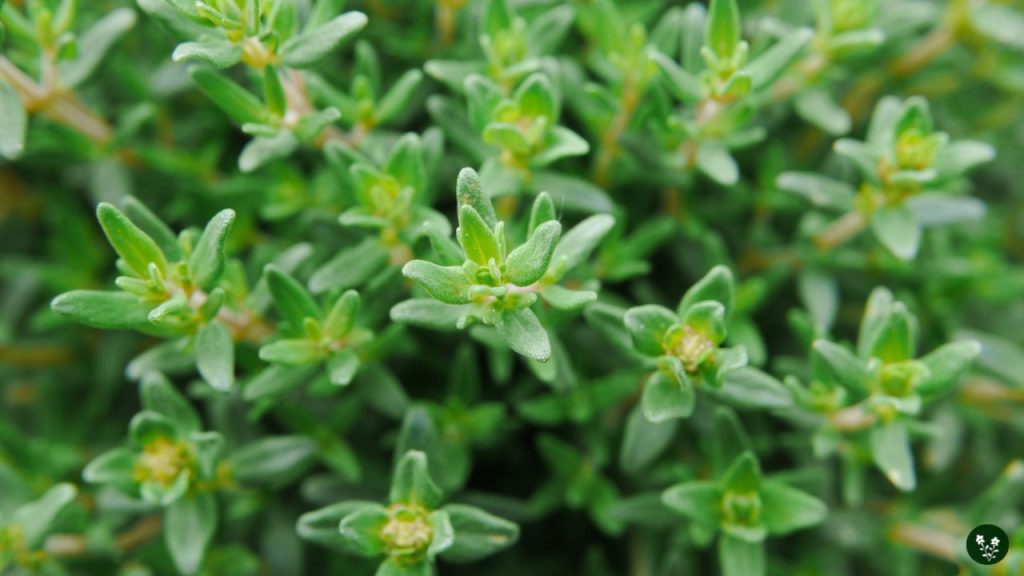
Thyme (Thymus spp.) is another herb that can be an excellent choice for a companion plant with Black-eyed Susans.
Thyme has small, aromatic leaves and a spreading growth habit, making it a great groundcover around taller Black-eyed Susans.
Lavender
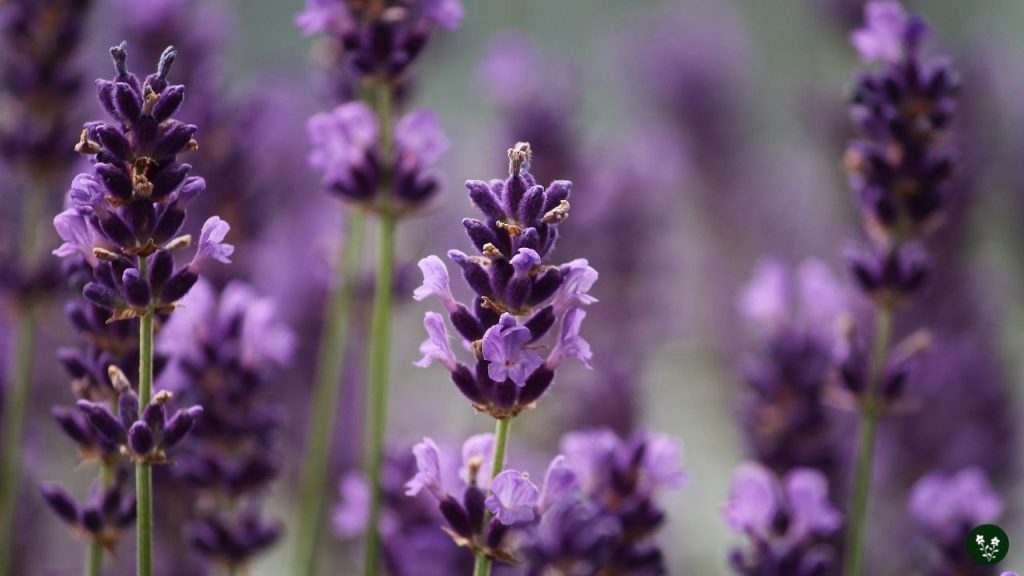
Lavender (Lavandula spp.) is a beautiful and fragrant companion for your Black-eyed Susans.
Lavender’s delicate purple flowers and silvery foliage can create a stunning contrast to the bold colors of Black-eyed Susans.
By including rosemary, thyme, and lavender as companion plants, you can create a visually appealing and aromatic garden space while benefiting from their natural pest-deterrent properties.
Your Black-eyed Susans will be healthier and flourish alongside these lovely herbs.
Learn more about:
- Lavender Flower Meaning for Love and Spiritual Growth
- How to Grow Lavenders: Tips for a Thriving Garden
4. Grass Companion Plants for Black-Eyed Susans
Feather Reed Grass
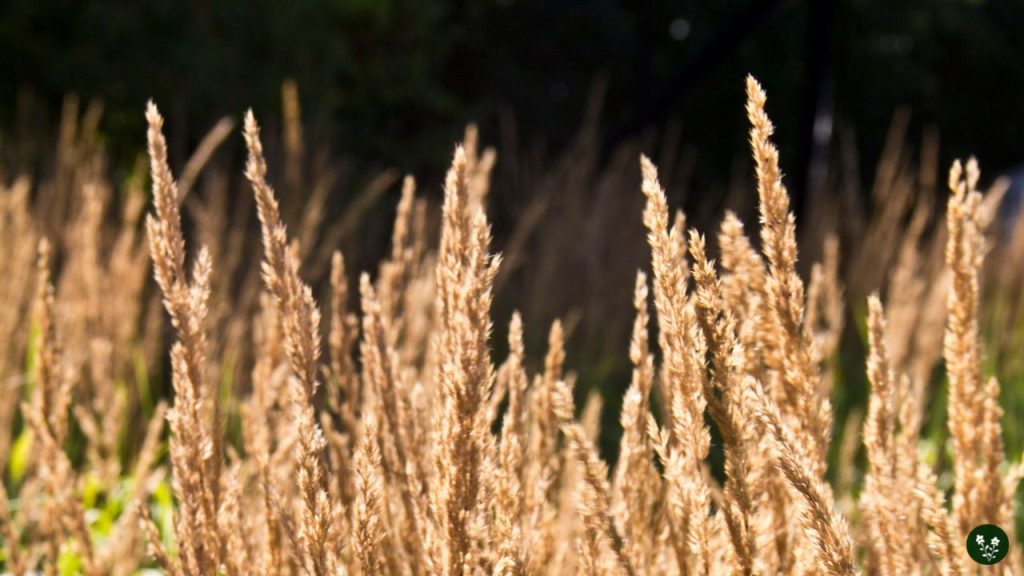
Feather Reed Grass (Calamagrostis x acutiflora) is an excellent grass companion for your Black-Eyed Susans.
It’s vertical growth and feathery plumes create a beautiful contrast to the vibrant blooms of the Black Eyed Susans.
Plant Feather Reed Grass close to your Black-Eyed Susans to create a stunning combination in your garden. Both plants thrive in the same growing conditions, needing full sun and well-draining soil.
Switchgrass
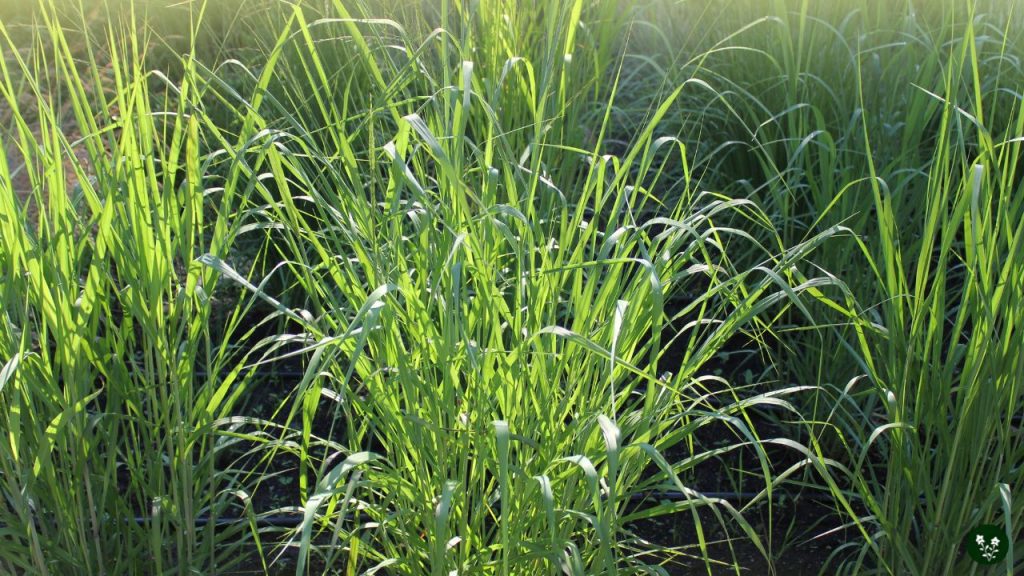
Switchgrass (Panicum virgatum) is another great grass choice for pairing with your Black-Eyed Susans.
Its tall, upright structure and airy seed heads provide an interesting texture to your garden.
Switchgrass is also a native plant to many parts of North America, making it a good choice for ecological reasons.
Plant Switchgrass behind your Black-Eyed Susans to ensure they receive enough sun while creating a visual backdrop for your stunning flowers.
Little Bluestem
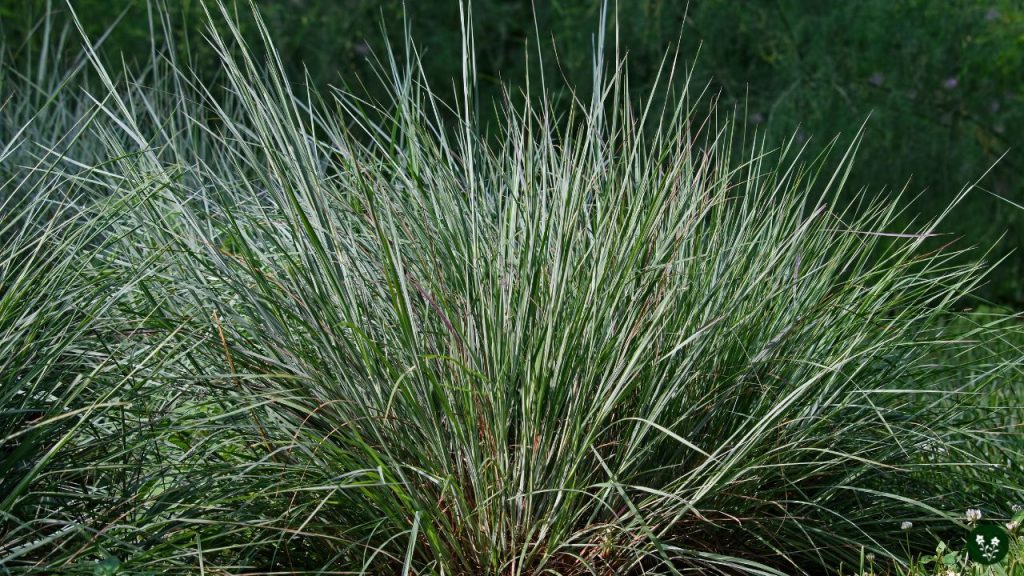
Little Bluestem (Schizachyrium scoparium) is a beautiful ornamental grass that contrasts with the Black Eyed Susans, thanks to its unique blue-green foliage.
As summer progresses, Little Bluestem’s foliage will turn into a striking copper color, complementing the yellows and oranges of your Black-Eyed Susans.
They both enjoy well-drained soil and consistent watering, making them a perfect pair for your garden.
Fountain Grass
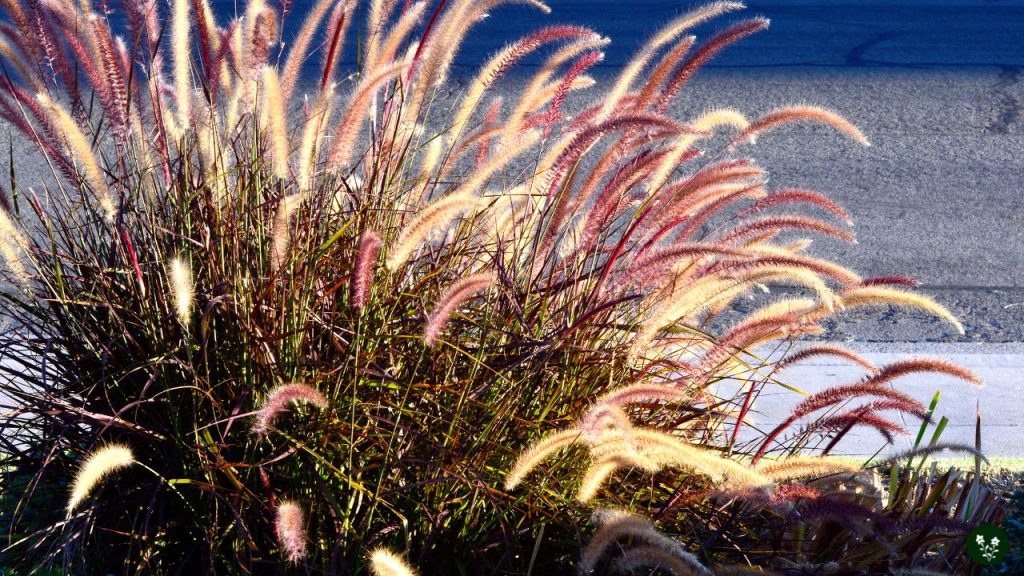
Fountain Grass (Pennisetum alopecuroides) is known for its attractive arching form, which adds movement and grace to your garden.
Its fluffy seed heads make an interesting contrast to the more solid blooms of the Black Eyed Susans.
Grow Fountain Grass next to your Black-Eyed Susans to create a lively, textured landscape. Like the Black Eyed Susans, this grass grows well in full sun and well-draining soil.
Japanese Silver Grass
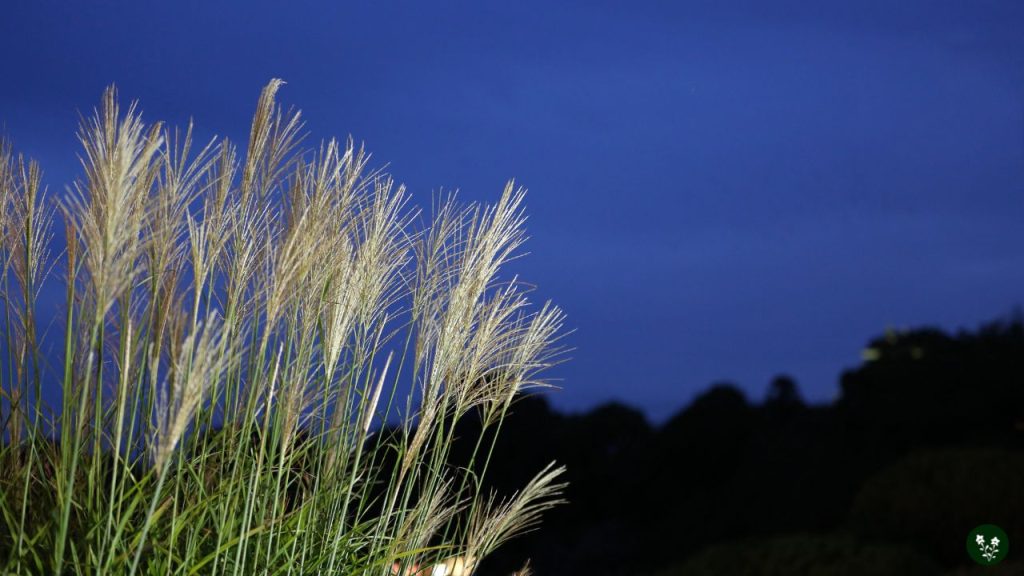
Japanese Silver Grass (Miscanthus sinensis) is a tall, elegant grass contrasts with your Black-Eyed Susans.
Its silvery plumes catch the sunlight beautifully and create a stunning partnership with the darker blooms of the Black Eyed Susans.
Japanese Silver Grass enjoys the sun and well-drained soil, making it an ideal companion plant to grow alongside your Black-Eyed Susans.
What do you want to read next?
- Number of Roses Meaning: Love and Symbolism
- Black Eyed Susan Flower Meaning: Spiritual Symbolism
- Types of Nuts: A Comprehensive Guide to Varieties and Uses
- Jewel Orchid Care: Essential Tips for Healthy Growth
- Lily Flower Meaning: Symbolism, Color, and Types
- 30 Mountain Flowers with Striking Natural Beauty
Leave a Reply